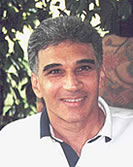During a serve and volley drill, one of my players served, came up to the net to hit a forehand volley, then recovered for a backhand volley in the middle. All went well until she got to that final shot, the backhand volley in the middle. She miss-hit the ball and it took a nosedive into the net. Point over!
Immediately the question was asked: "Why did I miss that shot? I was right there in position!" My simple answer was, "You misjudged the ball in that particular situation."
But why did she misjudge the ball? Well, that answer is more complex. Although most players would prefer to hear an answer with a straightforward, quick-fix technique, there is no such thing. I will explain why in this lesson. First I will give the answer from the perspective of the players themselves, and second, from the perspective of science.
Remember, seeing the ball and judging the ball are two very different skills. Seeing the ball simply means you have eyes that can see! If you are a beginner, you will see the ball many times as it flies past your racket and hits the back fence. Your vision may be fantastic but your ball judgment horrible. Ball judgment is a learned skill that takes hours of repetition. Ball judgment brought to an extremely high level enables you to find and properly hit the ball in a wide range of situations. As your ball judgment improves, so will your ability to hit the sweet spot of the racket.
BALL JUDGMENT FROM A PLAYER'S PERSPECTIVE
Ball judgment is not an absolute. You do not one day begin judging the ball correctly and then, from that day forth, have ball judgment mastered. Ball judgment varies from day to day, moment to moment. It depends on so many factors! How do you feel that day? How much pressure are you under? Who is your opponent? Who is your partner? What is your current mental state? If you just miss-hit a ball, what was the sequence of shots before you miss-hit? How long was the rally? What was the score? All of these factors (and more!) put pressure on your ability to judge the ball correctly in a given situation. This is the reality that club players as well as pros are faced with. There is no absolute ball judgment.
To add to the difficulty in all of these situations, your level of play also determines your percentage of miss-hits. For example, as a 2.5 player you might be faced with 25 different scenarios and judge the ball properly 13 times but misjudge the ball 12 times. As a 3.0 player you may hit the ball correctly 15 times and miss-hit 10 times. As a 3.5 player you could judge the ball correctly 17 times and misjudge 8 times. Let's skip to the pros. They may judge the ball correctly 24 times and miss-hit once!
Note carefully that everyone miss-hits and misjudges the ball from time to time, but the better player you are, the less often you misjudge the ball. How do you become a better player and misjudge the ball less often? Repetition! The more repetition and practice you perform, the less you will miss-hit. The answer is always more repetition. What did you think I was going to say? Keep your eye on the ball? Stare at the seam of the ball? Stay down low close to the ball? Sorry, you've got the wrong coach!
BALL JUDGMENT FROM A SCIENTIFIC PERSPECTIVE
From the physical standpoint, what affects how often you misjudge the ball? Is there an answer to that question? There is! The answer is myelination. Deep within your brain and nervous system, the axons or nerve fibers that transmit information are surrounded by a layer of insulation. Similar to the coating around an electric wire, this layer of insulation is called the "myelin sheath." Scientific studies have shown that the thicker the myelin coating, the faster and more accurately signals are transmitted through the axons. These nerve signals are intimately related to your tennis skills and ball judgment. The faster and more accurately your signals go through axons, the better you play. The top pros have a very thick myelin coating and their nerve fibers are like superhighways, with signals and impulses flying through at top speed.
Clearly, it behooves you to build up the myelin coating to increase the speed and accuracy of signals traveling through your nervous system. A thicker myelin sheath means your ball judgment will improve, and so will the consistency of your tennis game.
What helps an athlete build this myelin coating? According to the discoveries in science, the answer is repetition. That's right. Repetition builds layers on the myelin coating and produces changes in the brain to develop and refine your athletic skills. An intense training program of repetition actually boosts your perceptive ability. The more reps you do, the more myelin develops and the higher your skill level becomes. Why did you think the top pros were doing so much intense repetition? The question is, why aren't you?


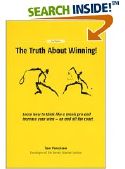
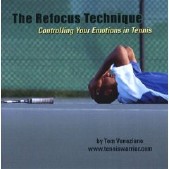
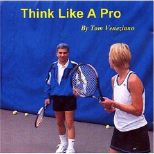
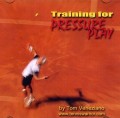



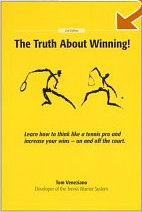
 You will join 13,000 other subscribers in receiving news of updates to the Tennis Server along with monthly tennis tips from tennis pro Tom Veneziano.
You will join 13,000 other subscribers in receiving news of updates to the Tennis Server along with monthly tennis tips from tennis pro Tom Veneziano. 